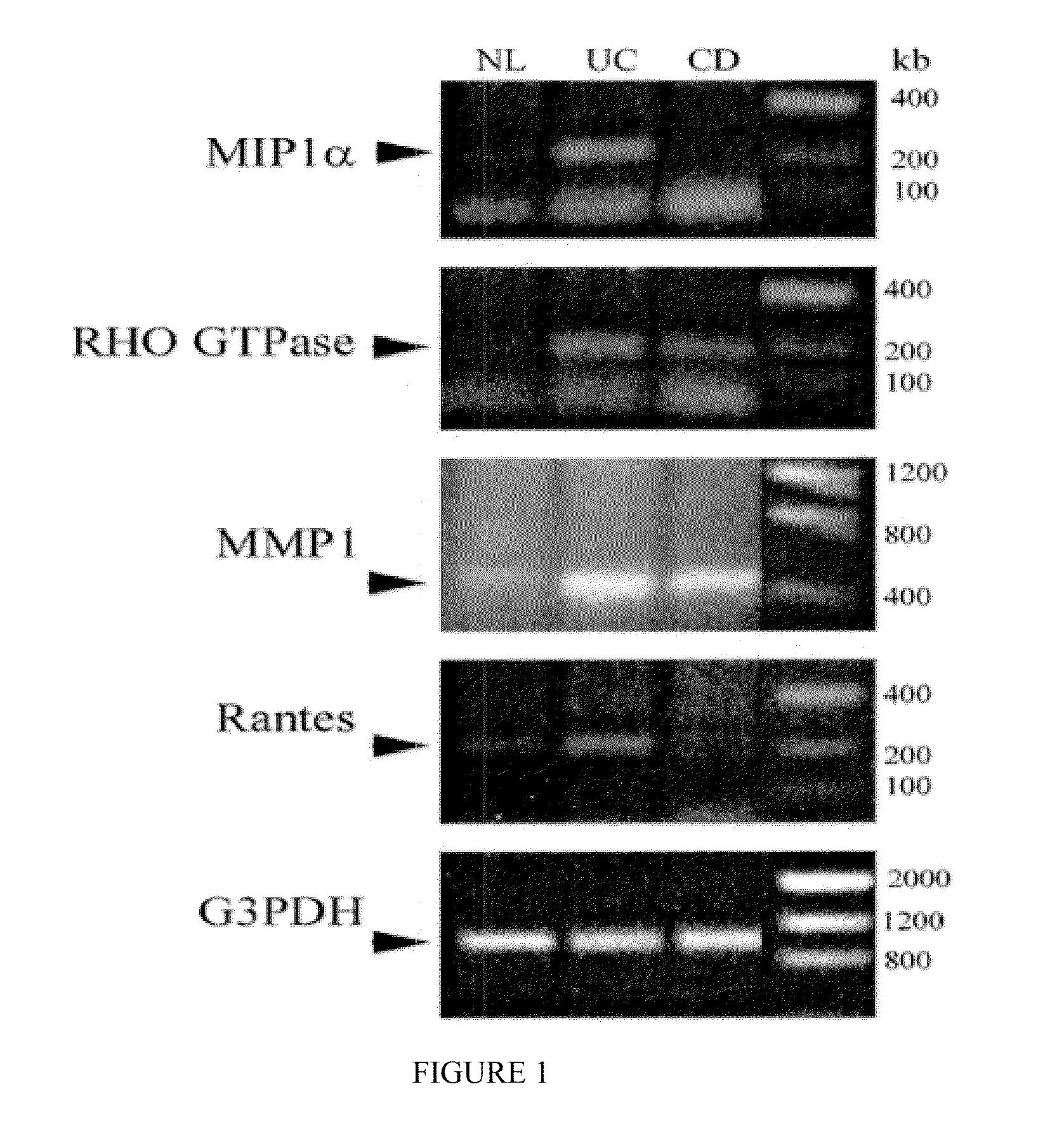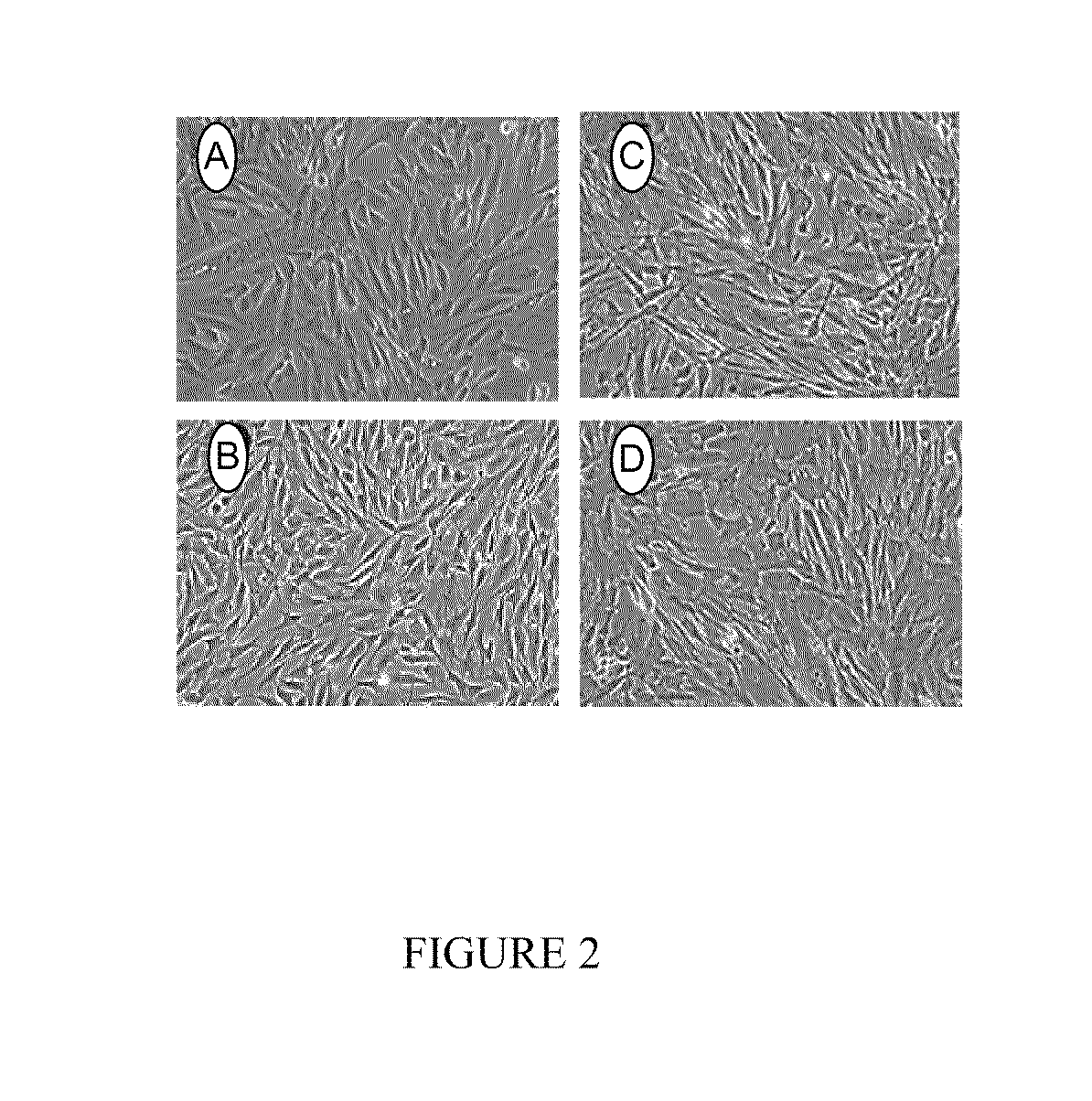Use and identification of biomarkers for gastrointestinal diseases
a biomarker and gastrointestinal disease technology, applied in the field of identification of biomarkers for gastrointestinal diseases, can solve the problems of no universally accepted molecular markers that identify gastrointestinal stem cells, poor prognosis for patients with advanced crc, and no specific biomarker to aid
- Summary
- Abstract
- Description
- Claims
- Application Information
AI Technical Summary
Benefits of technology
Problems solved by technology
Method used
Image
Examples
example 1
Isolation and Culture of HIPEC and HITEC Lines
[0207]1.1. Isolation of Human Gastrointestinal Segment-Specific Stem-Cell-Like Progenitor Cells and Establishment of Epithelial Cell Lines in Long Term Culture
[0208]Human intestinal primary epithelial cell lines (HIPEC) and human intestinal tumor-acquired epithelial cell lines (HITEC) are derived from gastrointestinal epithelial stem cell-like progenitor cells obtained from normal colon epithelium and from cancerous colon epithelium. Normal intestinal epithelial cells (IECs) are obtained from patients with colon cancer using surgical specimens excised at least 10 cm away from the tumor. Cancer tissue IECs are excised from the same patient. Both surgical specimens are made available from the Departments of Surgery and Pathology at the Robert Wood Johnson University Hospital.
[0209]1.1(a) Tissue Isolation
[0210]Surgical specimens of tissue are transported from an operating room to the laboratory within 30 minutes of surgery. The specimens ar...
example 2
Proof of Epithelial Origin of HIPEC Lines
[0222]2.1(a) Cytokeratin 18 Staining
[0223]Cells of epithelial origin are known specifically to contain cytoskeletal keratin. The intermediate filament system of intestinal epithelial cells in vivo contains cytokeratin 18 and 8. In order to confirm the epithelial origin of the HIPEC cells in culture, these cells are stained with an antibody (anti-cytokeratin 18) against one of the two intestinal epithelial filament proteins.
[0224]Gastrointestinal stem-cell-like progenitor cells, as isolated in Example 1 (see above), are grown on cover slips (Fisher Scientific). After permeabilization and fixation, cells are stained with anti-CK-18 antibody. The cover slips are washed three times in PBS / BSA and subsequently fixed in cold methanol at −20° C. for 10 minutes. The coverslips then are incubated in 2% FCS / PBS for 5 minutes. A FITC conjugated antibody against anti-human cytokeratin (Sigma) is used to detect the presence of cytokeratin and is incubated...
example 3
Characterization of HIPEC Lines
[0229]3.1. Morphology
[0230]The morphology of the HIPEC cell lines is examined using light microscopy. The epithelial origin of the cells is confirmed by staining with anti-cytokeratin 18. Electron microscopy is used to evaluate the ultrastructural characteristics of the cells. The cells were found to have a structural organization typical of intestinal epithelial cells as well as microvilli found at the apical membrane and a basement membrane formed at the base of the monolayer.
[0231]3.2. HIPEC Lines are Non-Transformed
[0232]Soft agar was prepared as follows: a) 1% agarose solution (5 ml) was added into a 10 cm2 petri dish until the plate was completely covered; b) the agarose was pipetted off leaving a thin film of agarose on the bottom of the petri dish; c) after drying the plate for 20 minutes with the lid on, 10 ml of cell suspension (0.5×106) was added on the top of the agarose film; d) medium was replaced every 4-5 days. Suspensions (2.0 ml) of n...
PUM
| Property | Measurement | Unit |
|---|---|---|
| Temperature | aaaaa | aaaaa |
| Temperature | aaaaa | aaaaa |
| Temperature | aaaaa | aaaaa |
Abstract
Description
Claims
Application Information
 Login to View More
Login to View More - R&D
- Intellectual Property
- Life Sciences
- Materials
- Tech Scout
- Unparalleled Data Quality
- Higher Quality Content
- 60% Fewer Hallucinations
Browse by: Latest US Patents, China's latest patents, Technical Efficacy Thesaurus, Application Domain, Technology Topic, Popular Technical Reports.
© 2025 PatSnap. All rights reserved.Legal|Privacy policy|Modern Slavery Act Transparency Statement|Sitemap|About US| Contact US: help@patsnap.com



